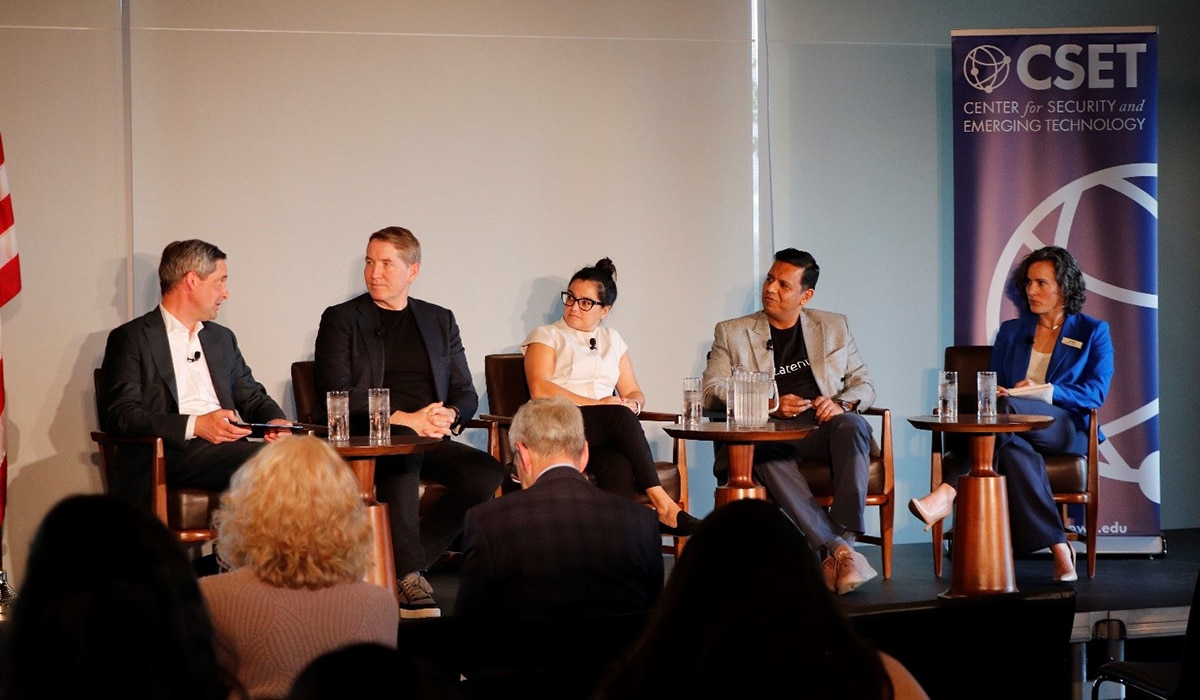Products & Technologies
Products & Technologies
Services
Resources
Posted
May 06, 2025
Industry Panel Explores Technology Leadership in the AI Era

At a recent panel hosted by the Center for Security and Emerging Technology (CSET), tech industry executives gathered to discuss strategies for maintaining U.S. leadership in the AI era. Tristan Holtam, group vice president and head of corporate strategy and development at Applied Materials, emphasized the importance of increasing the speed of collaboration across the entire technology stack – from software and systems to chip manufacturing – to bring new innovations to market faster.
Why It Matters: With nearly limitless potential applications, AI is expected to have a transformative impact on the global economy. Companies and countries around the world are in a race for leadership in the software and hardware technologies that will define next-generation AI platforms. CSET, a policy research organization within Georgetown University’s Walsh School of Foreign Service, brought together industry leaders representing key segments of the AI ecosystem to consider policies and programs that can accelerate innovation, strengthen technology leadership, and maintain national competitiveness in the emerging AI era.
Applied’s Role: While the panelists from Google Cloud, Latent AI and Leidos represented companies focused on developing AI applications, Applied works at the opposite end of the technology stack. Holtam shared his perspective on the hardware elements of AI – what’s limiting large-scale deployment today and how to promote future innovation in the foundational semiconductor technologies that form the building blocks of advanced AI computing systems.
Addressing Grand Challenges: Holtam noted that the primary challenge facing hardware development is energy consumption. The data centers required to train today’s most advanced large language models consume as much as 10 megawatts of electricity. In the near future, the next generation of models are expected to require gigawatt-class data centers, or the equivalent power output of an entire nuclear reactor.
“The grand challenge in the semiconductor industry is that we need a 10,000 times improvement in the energy efficiency of the hardware in the data center over the next 15 years,” said Holtam. “When you look at that roadmap, it’s very complex and there are a lot of interdependencies. This is going to be a race of which companies and countries can execute that roadmap most effectively.”

Accelerating Innovation Through Collaboration: In an environment of rapid technological change, the primary sustainable competitive advantage is speed. “A lot of the technology that’s going to allow AI to be deployed at large scale hasn’t been invented yet,” Holtam said. “One of the ways you can increase the speed of development and commercialization of technologies is to collaborate better across the stack.” This is the motivation behind Applied’s EPIC platform, a high-velocity innovation model designed to accelerate the introduction of new manufacturing innovations and reduce the time it takes to bring a technology from concept to commercialization. The centerpiece of this new platform is the EPIC Center, a multibillion dollar investment to build the world’s largest and most advanced facility for collaborative semiconductor process technology and manufacturing equipment R&D. Located in the heart of Silicon Valley, the EPIC Center will co-house Applied, chipmakers, universities and partners – welcoming the best minds in the industry.
Dig Deeper: A video replay of the event is available on the CSET YouTube channel (panel discussion begins just after the 32 minute mark).
